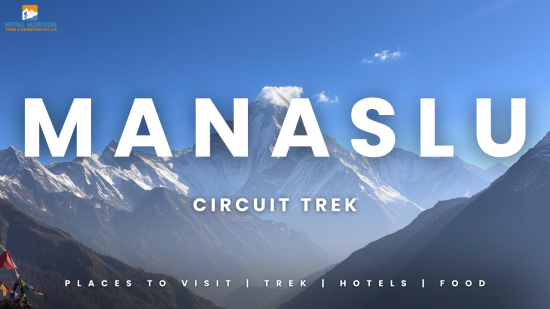How to Trek to Everest Base Camp – Ultimate Guide for 2025
28th October 2025
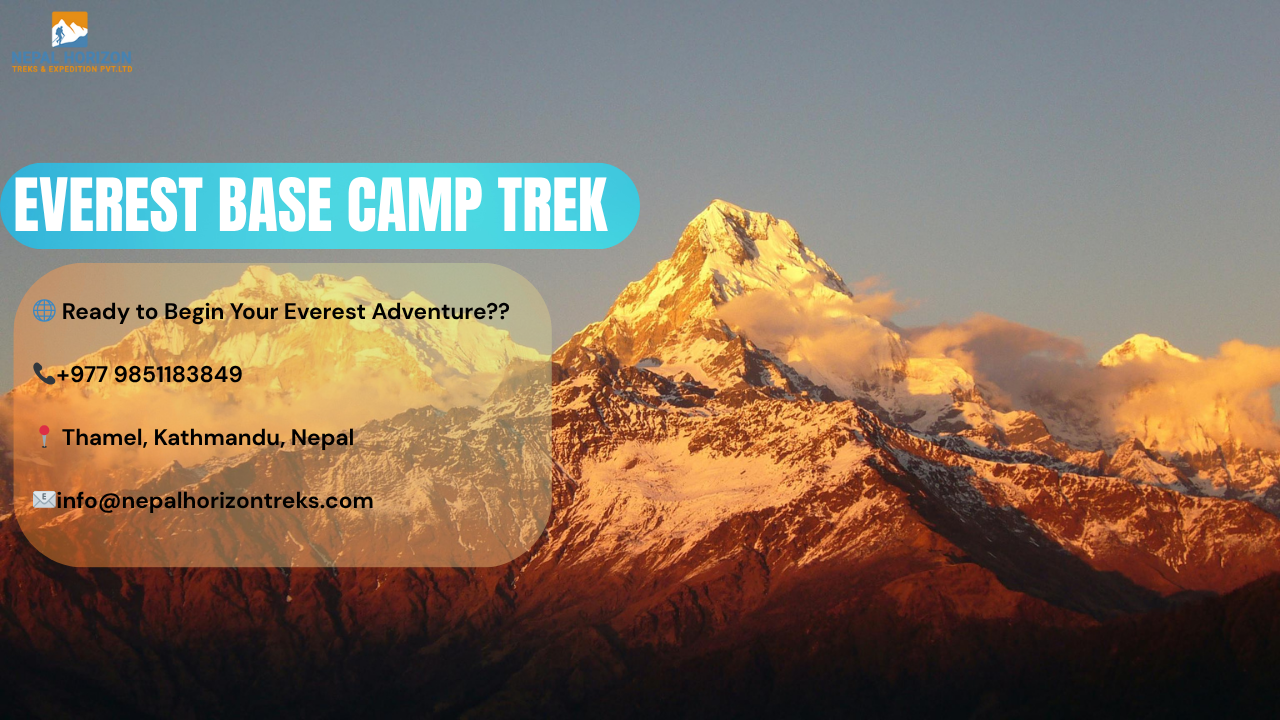
Introduction
Have you ever dreamed of standing at the foot of the highest mountain on Earth? The trek to Everest Base Camp (EBC) in Nepal is more than a walk in the hills — it’s a journey into the heart of the Himalayas, into Sherpa culture, into the thin, crisp mountain air that challenges and rewards you in equal measure. With Nepal Horizon Treks as your guide, this classic adventure becomes accessible, safe and unforgettable.
In this comprehensive guide you’ll discover:
- Why the Everest Base Camp trek is on so many bucket-lists.
- Key facts (distance, elevation, time) you must know before you go.
- A detailed, day-by-day sample itinerary you can follow or adapt.
- What to pack, how to train, what risks watching out for.
- How Nepal Horizon Treks makes it easier, smoother and more meaningful.
Let’s embark.
Why Choose the Everest Base Camp Trek?
Breathtaking views. From the Sherpa villages to the Khumbu Icefall, the panorama of peaks around you – including Mount Everest itself – is unforgettable. The trek gives you a front-row seat to Himalayan grandeur.
Cultural immersion. Along the route you’ll meet Sherpa families, explore monasteries, walk through rhododendron forests, cross suspension bridges and feel a strong sense of place and tradition.
Achievable for many. While challenging, the EBC trek does not require technical mountaineering skills. With good preparation, fitness and a proper guide you can complete it safely.
Lifetime accomplishment. Reaching Base Camp (approx. 5,364 m/17,598 ft) is a major achievement. The hardship is real — the reward even more so.
Flexible itineraries. Whether you have 10 days or 20 days, there are ways to tailor the route and pace to your schedule and fitness.
If you’re looking for the ultimate Himalayan trek that combines nature, culture and challenge — this is it.
Quick Facts briefly
Feature |
Detail |
|
Start point |
Usually a flight from Kathmandu (≈1,400 m) to Lukla (2,860 m) or by extended trekking approach. |
|
Highest point |
EBC itself ≈ 5,364 m / 17,598 ft. Nearby viewpoint Kala Patthar at ≈ 5,545 m provides iconic views. |
|
Distance |
From Lukla to EBC approx. 65 km one way; round trip ~130 km with return. |
|
Typical duration |
10-16 days depending on pace, starting point, acclimatisation days. |
|
Best seasons |
Spring (April-May) and Autumn (late Sep-Nov) for stable weather and clear views. |
|
Difficulty |
Moderate to strenuous: the altitude and distance are significant; no technical climbing required but fitness and acclimatisation are essential. |
Sample Itinerary – Day by Day
Here’s a sample 14-day itinerary you can use with Nepal Horizon Treks as a framework. It can be extended or shortened based on your time, fitness and interest.
Day 1: Arrive in Kathmandu (1,400 m) — Rest, checkgear, final shopping, meet your guide.
Day 2: Morning flight (or drive) to Lukla, trek to Phakding (2,610 m). A gentle introduction.
Day 3: Trek from Phakding to Namche Bazaar (3,440 m). Crossing suspension bridges, entering the Sherpa heartland.
Day 4: Acclimatisation day in Namche Bazaar — explore the village, take short hikes around, revisit the body to altitude.
Day 5: Trek from Namche to Tengboche (3,860 m) — Visit Tengboche Monastery, stunning views of Ama Dablam.
Day 6: Trek to Dingboche (4,410 m) — higher altitude, terrain becomes more alpine.
Day 7: Acclimatisation day in Dingboche — rest, short hike to nearby vantage points.
Day 8: Trek from Dingboche to Lobuche (4,940 m) — lots of altitude gain, trail gets tougher.
Day 9: Trek from Lobuche to Gorak Shep (5,170 m) then hike to Everest Base Camp (5,364 m) and return to Gorak Shep. Big day!
Day 10: Early morning hike to Kala Patthar (5,545 m) for sunrise over Everest, then descend to Pheriche or similar.
Day 11: Trek down from Pheriche to Namche Bazaar.
Day 12: Namche Bazaar to Lukla.
Day 13: Fly Lukla to Kathmandu; celebrate, relax in the city.
Day 14: Buffer/contingency day — in case of flight delays, weather issues, or simply for rest.
This itinerary gives you a balanced pace, necessary acclimatisation time and the full Everest Base Camp experience.
What to Pack & Gear Essentials
Trekking at high altitude means you’ll face cold temperatures, changing weather, rugged terrain — packing the right gear is vital.
Clothing / layering system:
- Moisture-wicking base layers.
- Warm mid-layer (fleece, down jacket).
- Waterproof / windproof shell jacket and pants.
- Trekking pants, thermal inner layers for colder nights.
- Hat, gloves, warm socks, gaiters if snow.
Footwear: Sturdy trekking boots, well broken-in, with ankle support and good grip.
Accessories: - Trekking poles (helpful for descents and uneven terrain).
- Headlamp/torch.
- Sunglasses with UV protection, sunscreen.
- Water bottle / bladder; consider water purification tablets or filter. According to guides, staying hydrated (4-5 litres/day) is very important. Miscellaneous:
- Daypack for on-trail items.
- Sleeping bag (many lodges provide blankets, but a good bag is safer).
- First-aid kit (especially for altitude-related issues).
- Personal hygiene items.
- Permit copies, insurance details, emergency contact info.
Important to check: Equipment list from your guide, gear rental options in Kathmandu or Lukla, weight limits (since domestic flights/porters have restrictions), and pack wisely (less is more).
Physical Preparation & Safety (Altitude, Health & Acclimatization)
Fitness Preparation: Build cardiovascular fitness (running, hiking, stair climbing) and some strength work (legs, core) before your trek. While technical climbing isn’t required, you’ll be walking for many hours, ascending and descending. Acclimatization: One of the most important factors for success and safety. Plan rest or short-hike days at key points (e.g., Namche Bazaar, Dingboche) so your body can adjust to decreasing oxygen levels.
Altitude-related risks:
- Acute Mountain Sickness (AMS): Symptoms include headache, nausea, dizziness, and loss of appetite. If untreated, it can lead to High Altitude Pulmonary Edema (HAPE) or High-Altitude Cerebral Edema (HACE).
- Monitor your body: listen to your guide, know when to rest or descend. Don’t push too fast.
Hydration and nutrition: Stay well-hydrated (4-5 liters) and eat properly — both are key at altitude.
Weather & conditions: Be ready for cold nights (temperatures near and below freezing at high points), possible snow or wind, changing trail conditions.
Hiring a guide / trekking agency: Having an experienced guide increases safety: they know the terrain, they monitor altitude issues, help with logistics and allow you to enjoy the journey rather than worry.
With solid preparation and the right team, the EBC trek is achievable and immensely rewarding.
Best Time to Go & What to Expect Season-wise
Autumn (late September – November): Often considered the best time: clear skies, stable weather, excellent visibility of Everest and surrounding peaks.
Spring (March – May): Also very popular: fresh snow, rhododendron blooms, good conditions.
Winter (December – February): Much colder, shorter daylight hours, some lodges may be closed; fewer crowds.
Monsoon (June – early September): Wet conditions, slippery trails, possible flight delays; although some trekkers still go.
Choosing your season depends on crowd-preference, budget, and your tolerance for cold or risk of weather delays.
Cost, Permits & Logistics
Permits required: Trekkers to the Everest region must have the necessary permits (e.g., entry to the national park, TIMS card, etc.).
Flights / access: Most treks start with a flight from Kathmandu to Lukla. This flight is scenic but also weather-sensitive — delays or cancellations are common.
Accommodation & food: On the trek you’ll stay in teahouses / lodges in villages. Rooms are simple but comfortable, meals hearty. Higher up, options and comfort reduce slightly, prices increase.
Typical cost range: Depends on length, group size, level of service (guiding, lodging standard, private vs group).
Nepal Horizon Treks services: With Nepal Horizon Treks you will get experienced guides, porter support, itinerary planning, permit handling, airport transfers and help navigating logistics — which means you can focus on the experience rather than the details.
Highlights of the Route & What You Will See
Lukla Airport & beginning of trail: The flight into Lukla is dramatic — high mountains, short runway, lots of excitement. From Lukla the trail first moves through forested hills, Rhododendron woodland, Sherpa villages.
Namche Bazaar: Often considered the “capital of the Khumbu”, it’s vibrant, scenic and a key acclimatisation stop. Look out for your first views of Everest here.
Tengboche Monastery: A spiritual highlight. Situated with a stunning backdrop of peaks such as Ama Dablam, it offers a moment of calm and cultural immersion.
Dingboche, Lobuche: As you head higher, you’ll notice the change of vegetation: fewer trees, more rocks, glacial moraines, sharper ridgelines.
Gorak Shep & Everest Base Camp: The final push. At Gorak Shep you’ll spend one night; next morning you hike to Base Camp and/or Kala Patthar for that iconic photo moment with Everest. The atmosphere is unforgettable.
Descent & return: On the way down you’ll retrace the trail, but the feeling is different — you’re returning with new strength, memories and a sense of achievement.
Why Trek with Nepal Horizon Treks?
At Nepal Horizon Treks we believe that the EBC trek isn’t just about reaching a location — it’s about the journey, the people you meet, the skills you learn, and the mountain memories you carry home. Here’s what makes our service stand out:
- Local expertise: Guides and porters who know the region intimately, its culture and risks.
- Safety-first approach: Built-in acclimatisation days, monitoring of health, high-quality gear and accommodations where available.
- Tailored itineraries: Whether you have 10 days or 20 days, want higher comfort or more budget-friendly, we adapt.
- Cultural and environmental respect: We support local Sherpa communities, respect permit rules, and promote responsible trekking.
- End-to-end service: From arrival in Kathmandu through to your farewell, we take care of flights, transfers, lodging and trekking logistics so you can focus on the mountains.
Top Tips for a Successful Everest Base Camp Trek
- Start training well in advance — build stamina, strength and trekking experience.
- Choose the right season for you based on weather, crowd and budget.
- Pack wisely: quality gear matters more the higher you go.
- Ascend slowly — listen to your body, hydrate, rest. Acclimatisation is not optional.
- Stay flexible: weather delays, flight cancellations to Lukla happen — allow buffer days.
- Respect the altitude: If symptoms of AMS arise, take it seriously. Your guide should help you.
- Opt for a reliable trekking company like Nepal Horizon Treks — the added cost is worth the safety and comfort.
- Enjoy the small moments: The trail is as much about Sherpa villages, suspension bridges and glacial landscapes as it is about Base Camp itself.
- Bring home the memory: At Kala Patthar sunrise, at sunset over Lobuche, in a teahouse over dinner — these are the moments you’ll never forget.
Conclusion
The trek to Everest Base Camp remains the ultimate Himalayan adventure for many travellers. It blends breathtaking scenery, cultural richness, personal challenge and profound reward. With the right preparation, mindset and guide, you can join the ranks of those who have stood beneath the towering summit of Mount Everest and felt that unique moment of arrival.
If you’re ready to take the step, to make this journey part of your story — then Nepal Horizon Treks is ready to walk it with you. Contact us, let’s design your trek, and together we’ll make it happen.
Ready to begin? Visit the Nepal Horizon Treks website to view our upcoming Everest Base Camp departure dates, get your gear list, and start training. The mountains await.
Let me know if you’d like to custom
With Nepal Horizon Treks, you’re not just trekking—you’re becoming part of Nepal’s timeless Himalayan story.
🌐 Ready to Begin Your Manaslu Circuit Adventure?
📞 Contact Us
📍 Thamel, Kathmandu, Nepal
📧 info@nepalhorizontreks.com
📱 +977 9851183849
Recent From Blogs

28th October 2025
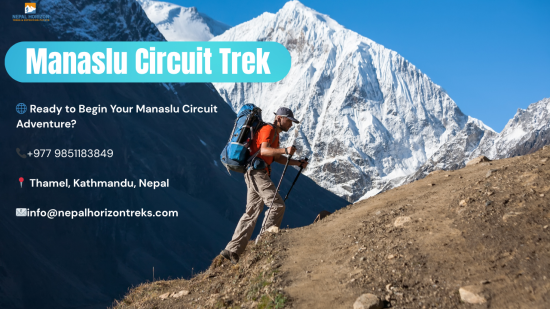
25th October 2025
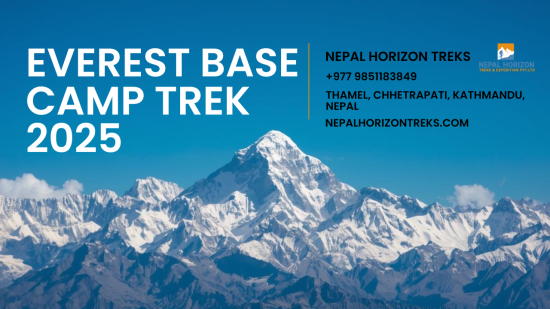
24th October 2025
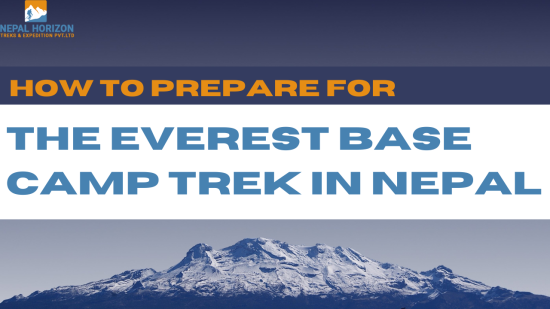
18th October 2025
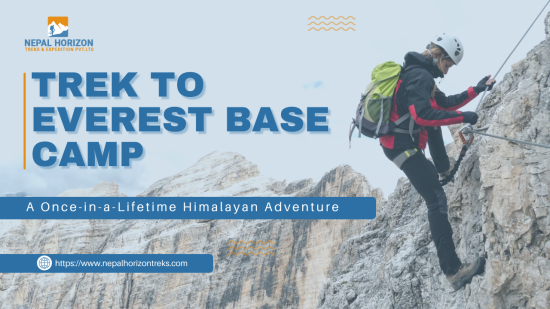
14th October 2025
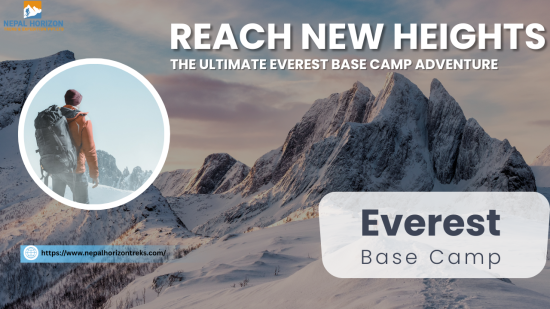
12th October 2025
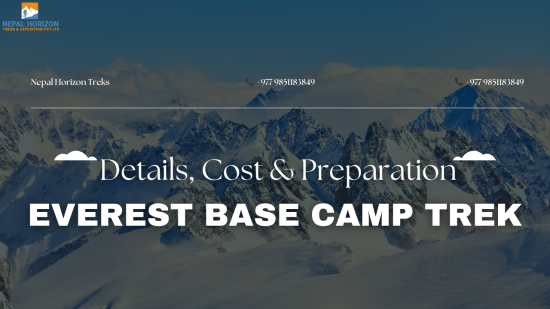
10th October 2025

7th October 2025


